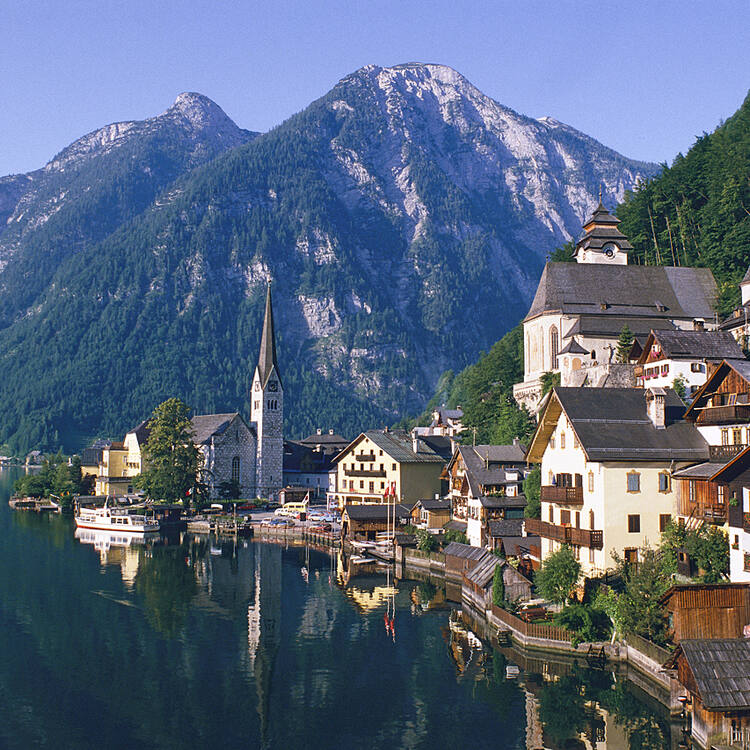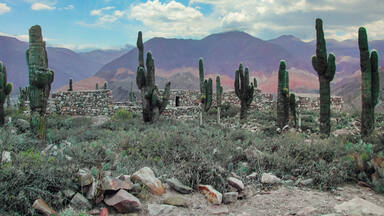Hallstatt-Dachstein / Salzkammergut Cultural Landscape
Hallstatt-Dachstein / Salzkammergut Cultural Landscape
Human activity in the magnificent natural landscape of the Salzkammergut began in prehistoric times, with the salt deposits being exploited as early as the 2nd millennium BC. This resource formed the basis of the area’s prosperity up to the middle of the 20th century, a prosperity that is reflected in the fine architecture of the town of Hallstatt.
Description is available under license CC-BY-SA IGO 3.0
Paysage culturel de Hallstatt-Dachstein / Salzkammergut
L’activité humaine dans le splendide paysage naturel du Salzkammergut a commencé à l’époque préhistorique avec l’exploitation de ses dépôts de sel dès le IIe millénaire av. J.-C. Cette ressource a constitué la base de la prospérité de la région jusqu’au milieu du XXe siècle, prospérité que reflète la belle architecture de la ville de Hallstatt.
Description is available under license CC-BY-SA IGO 3.0
المنظر الثقافي في هالستات-داشستاين/شالزكاميرغوت
بدأ النشاط البشري في الموقع الطبيعي الرائع في سالزكاميرغوت في فترة ما قبل التاريخ باستغلال مخازن الملح منذ الألف الثاني قبل المسيح. لقد شكّل هذا المصدر قاعدة للازدهار في المنطقة حتى منتصف القرن العشرين، وهو ازدهار يعكسه ازدهار الهندسة المعمارية الجميلة في مدينة هالستات.
source: UNESCO/CPE
Description is available under license CC-BY-SA IGO 3.0
哈尔施塔特-达特施泰因萨尔茨卡默古特文化景观
在萨尔茨卡默古特(Salzkammergut)秀美的自然景观中,从史前时代起就有了人类活动。早在公元前2000年,人类就开始在这里开采盐矿。一直到20世纪中叶,这项资源一直是该地区繁荣昌盛的基础,这里的繁华从哈尔施塔特城(Hallstatt)的精美建筑中可见一斑。
source: UNESCO/CPE
Description is available under license CC-BY-SA IGO 3.0
Культурный ландшафт Хальштатт-Дахштайн, район Зальцкаммергут
Великолепный природный ландшафт района Зальцкаммергут с доисторических времен является местом обитания человека, а залежи соли разрабатывались здесь со 2-ого тысячелетия до н.э. Эти ресурсы составляли основу процветания данной территории вплоть до середины XX в., что нашло отражение в своеобразной архитектуре города Хальштатт.
source: UNESCO/CPE
Description is available under license CC-BY-SA IGO 3.0
Paisaje cultural de Hallstatt-Dachstein / Salzkammergut
La actividad del ser humano en el magnífico paisaje natural de Salzkammergut se remonta a tiempos prehistóricos, cuando sus abundantes depósitos de sal comenzaron a ser explotados en el segundo milenio a.C. Este recurso constituyó hasta mediados del siglo XX la base de la prosperidad económica de la zona, que se refleja en la bella arquitectura de la ciudad de Hallstatt.
source: UNESCO/CPE
Description is available under license CC-BY-SA IGO 3.0
ハルシュタット-ダッハシュタイン・ザルツカンマーグートの文化的景観
ザルツカンマーグートの壮大な自然景観に抱かれた人類の営みは、先史時代に溯る。紀元前2000年紀にはこの地の岩塩層が利用され始めた。この資源が、ハルシュタットの町の洗練された建造物に見られるような、20世紀中頃までのこの地方の繁栄の礎となった。source: NFUAJ
Culturele landschap van Hallstatt-Dachstein/Salzkammergut
De menselijke activiteit in het prachtige landschap van de Salzkammergut begon in de prehistorie met het winnen van zout. De zoutmijn vormde de basis van de welvaart van het gebied tot het midden van de 20e eeuw. De rijkdom wordt weerspiegeld in de mooie architectuur van de stad Hallstatt, wat 'zoutafzetting' betekent. Het landschap speelt een belangrijke rol in de menselijke geschiedenis. Doordat boeren en mijnwerkers duizenden jaren lang de mijnen benutten, is de binnenkant van de berg compleet veranderd. Daarnaast inspireerde het gebied op een culturele manier; de schoonheid en harmonie zijn menigmaal door kunstenaars en schrijvers bezongen.
Source: unesco.nl
Outstanding Universal Value
Brief synthesis
The Hallstatt-Dachstein alpine landscape, part of the Salzkammergut, and thus of the Eastern Alps, is one of visual drama with huge mountains rising abruptly form narrow valleys. Its prosperity since mediaeval times has been based on salt mining, focused on the town of Hallstatt, a name meaning salt settlement that testifies to its primary function.
Systematic salt production was being carried out in the region as early as the Middle Bronze Age, (the late 2nd millennium BC), when natural brine was captured in vessels and evaporated. Underground mining for salt began at the end of the late Bronze Age and resumed in the 8th century BC when archaeological evidence shows a flourishing, stratified and highly organised Iron Age society with wide trade links across Europe and now known as the Hallstatt Culture. Salt mining continued in Roman times and was then revived in the 14th century. The large amounts of timber needed for the mines and for evaporating the salt where extracted from the extensive upland forests, which since the 16th century were controlled and managed directly by the Austrian Crown. The Town of Hallstatt was re-built in late Baroque style after a fire in 1750 destroyed the timber buildings.
The beauty of the alpine landscape, with its higher pastures used for the summer grazing of sheep and cattle since prehistoric times as part of the process of transhumance, which still today gives the valley communities rights of access to specific grazing areas, was 'discovered' in the early 19th century by writers, such as Adalbert Stifler, novelist, and the dramatic poet Franz Grillparzer, and most of the leading paintings of the Biedermeier school. They were in turn followed by tourists and this led to the development of hotels and brine baths for visitors.
The landscape is exceptional as a complex of great scientific interest and immense natural power that has played a vital role in human history reflected in the impact of farmer-miners over millennia, in the way mining has transformed the interior of the mountain and through the artists and writers that conveyed its harmony and beauty.
Criterion (iii): Humankind has inhabited the valleys between huge mountains for over three millennia. It is the mining and processing of salt, a natural resource essential to human and animal life, which has given this area its prosperity and individuality as a result of a profound association between intensive human activity in the midst of a largely untamed landscape.
Criterion (iv): The Hallstatt-Dachstein/Salzkammergut alpine region is an outstanding example of a natural landscape of great beauty and scientific interest which also contains evidence of fundamental human economic activity. The cultural landscape of the region boasts a continuing evolution covering 2500 years. Its history from the very beginning is linked primarily with the economic history of salt extraction. Salt mining has always determined all aspects of life as well as the architectural and artistic material evidence. Salt production on a major scale can be traced back in Hallstatt to the Middle Bronze Age.
Integrity
The property appropriately retains all the elements linked to evidence of salt mining and processing, associated timber production, transhumance and dairy farming, and still retains the harmony that attracted the 19th century artists and writers.
It has not, and does not, suffer from the adverse effects of modern development.
Authenticity
Because of its special historical evolution, this cultural landscape has retained a degree of authenticity in nature and society that is outstanding in the alpine region. Resulting from a harmonious interaction between man and environment it has preserved its spatial and material structure to an exceptionally high degree. This quality and context has been further endorsed by a large number of visiting artists whose many canvases and representations are additional fitting testimony to its value.
Protection and management requirements
Due to different needs, both Federal and Provincial levels of protection are in force. Combined, these cover monuments and ensembles, newly erected buildings, woods, water and ground water, and general aspects of nature, including specific items, larger areas, caves and cultivated areas. There are also provisions regarding regional planning.
In recent times there has been an increasing collective awareness concerning the heritage value of the urban fabric. The Communes and the owners carry out day-to-day management. This approach is based on direction provided by experts of the Provinces and the Federal Office for Protection of Monuments. Funds are made available from the Federal State of Austria, the Federal Provinces Salzburg and Styria and, especially, from the Province of Upper Austria.

